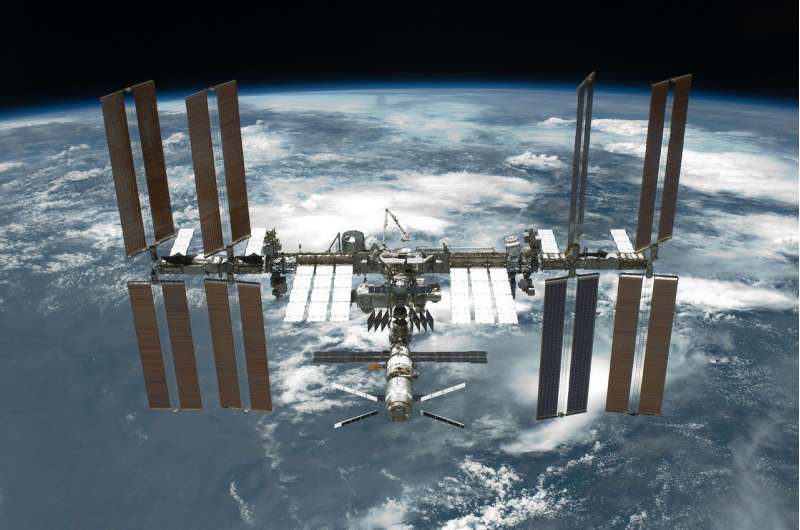New imaging spectrometer surveys atmospheric dust from the ISS

Scientists on Earth will soon see our planet's atmospheric dust sources in high resolution, as a new state-of-the-art imaging spectrometer鈥攄eveloped by NASA's Jet Propulsion Laboratory (JPL) and Cornell University鈥攁ims to survey the land surface from 250 miles above us on the orbiting International Space Station.
The instrument's launch aboard a SpaceX Dragon re-supply mission to the ISS is scheduled for June 7, from the Kennedy Space Center in Cape Canaveral, Florida.
Scientists want to better understand how atmospheric dust contributes to the heating or cooling of the Earth. "We're trying to characterize the dust particulates that are blown from the surface into the atmosphere," said Natalie Mahowald, an atmospheric scientist at Cornell, who serves as the mission's deputy principal investigator. "One of the biggest uncertainties in the climate system comes from aerosols, and dust aerosols are both important aerosols for climate change, and desert dust can change in response to climate change."
"These aerosols鈥攐r dust鈥攃an be small or big, they can be lighter or darker, as all these different things are spatially heterogeneous," she said. "They're just really complicated."
The imaging spectrometer is the science instrument for the Earth Surface Mineral Dust Source Investigation mission鈥攌nown by the acronym EMIT鈥攁nd it will measure the composition of minerals from Earth's deserts that typically become airborne atmospheric dust.
There are many varieties of atmospheric dust. Those that contain iron oxides (rust) have dark hues that can warm the atmosphere. Conversely, clay or carbonate dust reflects sunlight and can cool the atmosphere. The instrument鈥攚hich scans a 50-mile swath鈥攚ill measure light in visible and infrared wavelengths, acquiring more than 1.6 gigabits of data each second to map mineral composition on Earth's surface. The mission expects to gain more than 1 billion usable spectroscopic measurements.
"Different kinds of dust have different properties鈥攖hey're acidic, they're basic, they're light-colored, they're dark鈥攖hat determine how the particles interact with Earth's atmosphere, as well as its land, water and ecosystems," said Robert O. Green, EMIT's principal investigator and JPL senior research scientist. "Within a year after launch, we'll be on track to map the world's dust-source regions and understand how dust heats and cools the planet, as well as how that might change under future climate scenarios."
Mahowald said that the new high-resolution data set for examining mineral dust source composition from EMIT will be comprehensive. "Remote sensing is the way to get coverage everywhere," she said. "We'll have better estimates of the dust composition and radiative forcing to know whether these dust aerosols are warming or cooling our atmosphere."
Provided by Cornell University




















